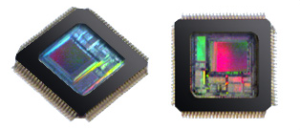Break ST62T65 Chip Protected Memory
The interrupt procedure is very similar to a call procedure, in fact the user can consider the interrupt as an asynchronous call procedure which can be greatly helpful for Break ST62T65 Chip Protected Memory. As this is an asynchronous event, the user cannot know the context and the time at which it occurred.
As a result, the user should save all Data space registers which may be used within the interrupt routines to facilitate the process of ST62T46 Chip Source Code Extraction. The following list summarizes the interrupt procedure:
When an interrupt request occurs, the following actions are performed by the MCU automatically:
- The core switches from the normal flags to the interrupt flags (or the NMI flags).
- The PC contents are stored in the top level of the stack.
- The normal interrupt lines are inhibited (NMI still active).
- The internal latch (if any) is
- The associated interruptvectoris loaded in the
When an interrupt request occurs, the following actions must be performed by the user software:
- User selected registers have to be saved within the interrupt service routine (normally on a software stack).
- The source of the interrupt must be determined by polling the interrupt flags (if more than one source is associated with the same vector).
- The RETI (RETurn from Interrupt) instruction must end the interrupt service
After the RETI instruction is executed, the MCU re- turns to the main routine.
Caution: When a maskable interrupt occurs while the ST6 core is in NORMAL mode and during the execution of an “ldi IOR, 00h” instruction (disabling all maskable interrupts): if the interrupt request occurs during the first 3 cycles of the “ldi” instruction (which is a 4-cycle instruction) the core will switch to interrupt mode BUT the flags CN and ZN will NOT switch to the interrupt pair CI and ZI.


